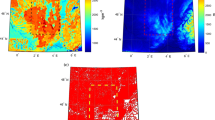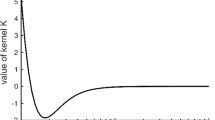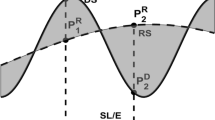Abstract
Recent papers in the geodetic literature promote the reduction of gravity for geoid determination according to the Helmert condensation technique where the entire reduction is made in place before downward continuation. The alternative approach, primarily developed by Moritz, uses two evaluation points, one at the Earth’s surface, the other on the (co-)geoid, for the direct topographic effect. Both approaches are theoretically legitimate and the derivations in each case make use of the planar approximation and a Lipschitz condition on height. Each method is re-formulated from first principles, yielding equations for the direct effect that contain only the spherical approximation. It is shown that neither method relies on a linear relationship between gravity anomalies and height (as claimed by some). Numerical tests, however, show that the practical implementations of these two approaches yield significant differences. Computational tests were performed in three areas of the USA, using 1′×1′ grids of gravity data and 30″×30″ grids of height data to compute the gravimetric geoid undulation, and GPS/leveled heights to compute the geometric geoid undulation. Using the latter as a control, analyses of the gravimetric undulations indicate that while in areas with smooth terrain no substantial differences occur between the gravity reduction methods, the Moritz–Pellinen (MP) approach is clearly superior to the Vanicek–Martinec (VM) approach in areas of rugged terrain. In theory, downward continuation is a significant aspect of either approach. Numerically, however, based on the test data, neither approach benefited by including this effect in the areas having smooth terrain. On the other hand, in the rugged, mountainous area, the gravimetric geoid based on the VM approach was improved slightly, but with the MP approach it suffered significantly. The latter is attributed to an inability to model the downward continuation of the Bouguer anomaly accurately in rugged terrain. Applying the higher-order, more accurate gravity reduction formulas, instead of their corresponding planar and linear approximations, yielded no improvement in the accuracy of the gravimetric geoid undulation based on the available data.
Similar content being viewed by others
Author information
Authors and Affiliations
Rights and permissions
About this article
Cite this article
Jekeli, C., Serpas, J.G. Review and numerical assessment of the direct topographical reduction in geoid determination. Journal of Geodesy 77, 226–239 (2003). https://doi.org/10.1007/s00190-003-0320-y
Received:
Accepted:
Issue Date:
DOI: https://doi.org/10.1007/s00190-003-0320-y




